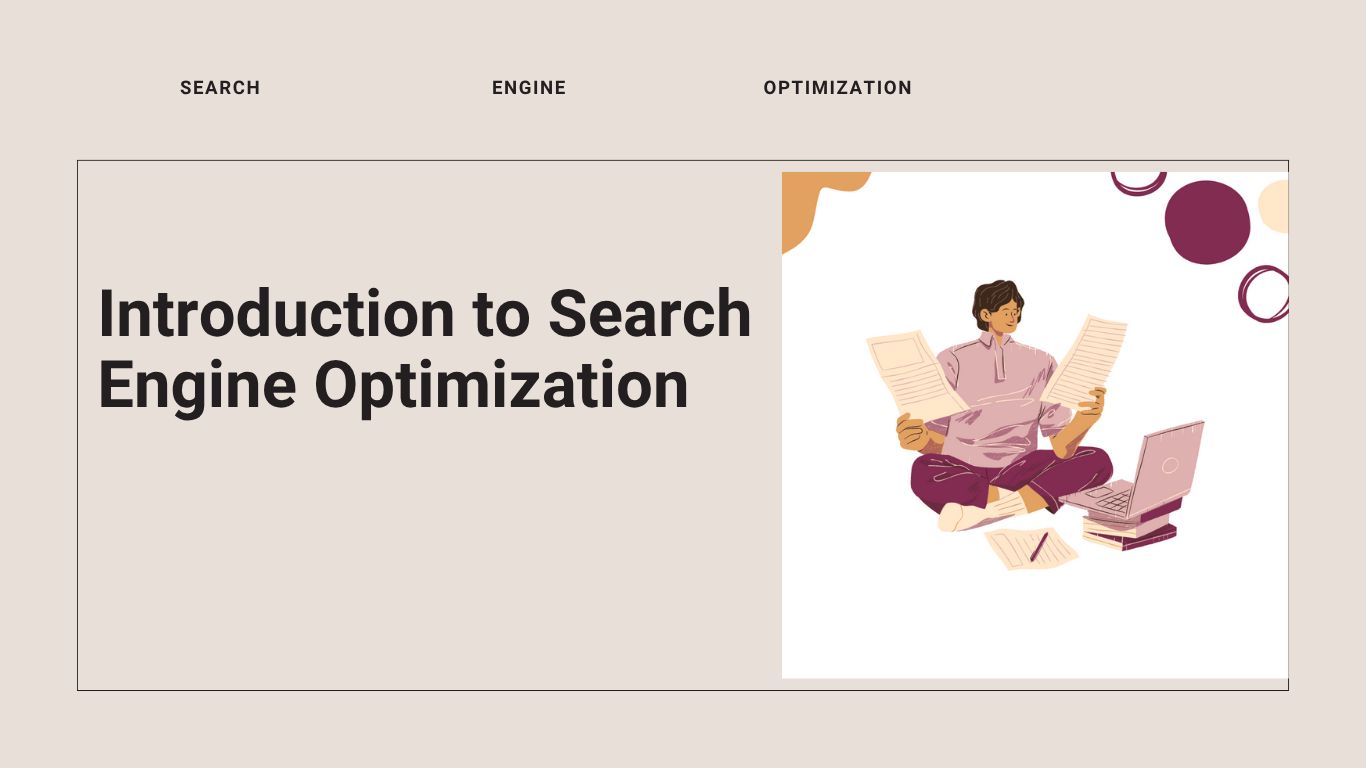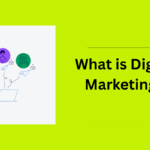
Introduction to Search Engine Optimization
Introduction to Search Engine Optimization
Search Engine Optimization commonly referred to as SEO, is a multifaceted digital marketing strategy aimed at enhancing the visibility and ranking of websites in search engine results pages (SERPs). At its core, SEO involves various techniques and best practices designed to attract organic traffic to a website. Introduction to Search Engine Optimization the importance of SEO cannot be overstated, as a higher rank in search results significantly increases the likelihood that users will visit a website, thereby driving potential customers and revenue.
Table Of Content
Understanding how SEO works requires recognizing the role that search engines, such as Google and Bing, play in facilitating the discovery of information online. When a user inputs a query, search engines utilize algorithms to determine the most relevant websites to display. These algorithms consider various factors, including content quality, keyword relevance, page load speed, and mobile-friendliness. Hence, optimizing these elements is crucial for improving a site’s search engine ranking.
SEO encompasses several core components, which include on-page optimization, off-page optimization, and technical SEO. On-page optimization involves refining elements within a web page, such as utilizing appropriate keywords, creating engaging content, and optimizing meta tags. Off-page optimization focuses on building link authority and acquiring backlinks from reputable websites, which enhances trustworthiness in the eyes of search engines. Technical SEO, on the other hand, addresses the backend components of a website, ensuring that it is crawlable by search engines and free from technical issues that might hinder performance.
In conclusion, a comprehensive understanding of search engine optimization is essential for online businesses aiming to establish a robust web presence. By mastering the various elements of SEO, businesses can improve their visibility on search engines, attract more visitors to their sites, and ultimately achieve greater success in the competitive digital landscape.
The Importance of SEO in Digital Marketing
Search Engine Optimization (SEO) plays a crucial role in the realm of digital marketing, serving as a foundation for numerous marketing strategies designed to enhance brand visibility and user engagement. At its core, SEO is the process of optimizing a website to improve its ranking on search Engel results pages (SERPs), which significantly drives organic traffic to the site. This influx of relevant visitors not only increases the chances of conversion but also aids in establishing a stronger online presence, making SEO an indispensable tool for businesses.
One of the most significant advantages of SEO is its ability to boost brand visibility. By ensuring that a website ranks well for relevant keywords, businesses can reach potential customers at the exact moment they are searching for products or services. This heightened visibility helps build brand authority and recognition, fostering trust among consumers. Furthermore, a strong SEO strategy attracts quality traffic, which is vital for not only increasing user engagement but also enhancing the likelihood of repeat visits and customer loyalty.
The return on investment (ROI) from effective SEO strategies can be substantial. Unlike paid advertising, which ceases to generate traffic when funding runs out, the benefits derived from SEO are long-lasting. Once a website achieves a high ranking, it can continue to attract visitors over time with minimal ongoing investment. This characteristic makes SEO a cost-effective approach in a comprehensive digital marketing strategy, particularly for small to medium-sized enterprises seeking a competitive edge. The impact of SEO extends far beyond mere visibility; it enhances all facets of marketing efforts by providing valuable insights into customer behavior and preferences, which can inform future campaigns and strategies.
How Search Engines Work
Search engines play a pivotal role in navigating the vast expanse of information available on the internet. The fundamental processes that underpin search engines like Google and Bing can be broadly categorized into three main stages: crawling, indexing, and ranking. Understanding these mechanisms is essential for effective search engine optimization (SEO).
The first stage, crawling, involves search engine bots systematically exploring the web to discover new or updated content. These bots, also known as spiders or crawlers, follow links across websites, collecting data about each page they encounter. They use a complex set of algorithms to determine which pages are valuable, often prioritizing those that receive high organic traffic or are linked to by other reputable sources. This process is crucial because it ensures that the most relevant content is accessible to users.
Once the crawling process is complete, the information gathered is stored in a vast database through a procedure known as indexing. During indexing, the search engine analyzes the content of each page, considering factors such as keywords, site structure, and overall relevance. This organized database allows the search engine to quickly retrieve relevant information when users input search queries. An optimized website that follows best practices for SEO can significantly enhance the likelihood of being indexed favorably.
The final stage is ranking, where search engines employ intricate algorithms to determine the order in which indexed pages appear in search results. These algorithms consider various criteria, including content relevance, page load speed, user engagement metrics, and mobile responsiveness. The ultimate goal of ranking is to provide users with the most pertinent and high-quality results that address their search intent. By grasping how search engines work—particularly through crawling, indexing, and ranking—webmasters can implement strategies that improve their site’s visibility and effectiveness in search results.
Key Components of SEO
Search Engine Optimization (SEO) encompasses a range of strategies and techniques aimed at improving the visibility of a website in search engine results. To fully understand SEO, it is essential to explore its three key components: on-page SEO, off-page SEO, and technical SEO. Each component plays a vital role in ensuring that a website ranks effectively and reaches its target audience.
On-page SEO refers to the practices implemented directly on web pages to enhance their ranking in search results. This includes crafting high-quality, relevant content that satisfies user intent and incorporating relevant keywords strategically throughout the text. Beyond content quality, on-page SEO encompasses optimizing HTML tags, including title tags, meta descriptions, and header tags. Best practices also involve ensuring proper internal linking structures and employing responsive design, which allows for optimal performance across devices.
Off-page SEO, on the other hand, involves activities conducted outside the website to increase its authority and reputation. Link-building is a critical aspect of off-page SEO, where acquiring quality backlinks from reputable sites signals trust to search engines. Social media engagement and content marketing are additional avenues that can drive traffic and improve visibility. Establishing relationships with influencers and participating in industry-related discussions further reinforce off-page SEO efforts, enriching a site’s credibility and reach.
Lastly, technical SEO focuses on the back-end aspects of a website that contribute to its performance and user experience. This includes improving site speed, ensuring mobile-friendliness, and implementing structured data for better indexing. Site architecture should facilitate easy navigation, and employing XML sitemaps can assist search engines in crawling the site efficiently. Addressing these technical elements can significantly boost a website’s visibility and user experience.
In understanding these crucial components of SEO, one can better strategize their digital marketing efforts, resulting in improved search engine rankings and enhanced online presence.
On-Page SEO Techniques
Introduction to Search Engine Optimization On-page SEO refers to the practices implemented within a website to improve its search engine rankings and enhance user experience. One of the essential components of on-page SEO is keyword optimization. This involves strategically placing relevant keywords within your content while ensuring that it flows naturally. Effective keyword placement encompasses the title, headings, and throughout the body text. Moreover, incorporating synonyms and related terms can help to enhance context and improve relevance, thereby aiding search engines in understanding the webpage’s content.
Lastly, user experience (UX) plays a crucial role in on-page SEO. A well-designed website that loads quickly, is mobile-responsive, and features intuitive navigation can contribute significantly to better rankings. Ensuring that visitors can easily find the information they seek fosters a positive experience, potentially leading to higher engagement levels. Off-page SEO refers to the techniques employed beyond one’s own website to enhance its search engine rankings. Among the most significant strategies in off-page SEO is link building. This practice involves acquiring hyperlinks from other websites to your own, which plays a crucial role in establishing authority and trustworthiness in the eyes of search engines. The quality of the links, rather than just the quantity, is vital; links from reputable and relevant sites can significantly boost a website’s position in search results.
Moreover, social media influence has emerged as an essential component of off-page SEO. Although social media signals do not directly affect rankings, they contribute to increased visibility and traffic. A strong social media presence can amplify content reach, encouraging shares and backlinks, while fostering engagement with a broader audience. By participating actively on platforms like Facebook, Twitter, and LinkedIn, businesses can create a positive online image that not only attracts users but also enhances search engine credibility.
Measuring SEO Success
Introduction to Search Engine Optimization, measuring the effectiveness of Search Engine Optimization (SEO) efforts is critical for understanding the impact of various strategies and for informing future initiatives. One of the primary methods of assessing SEO success is through the analysis of key performance indicators (KPIs). These metrics provide valuable insights into how well a website is performing in search engine results and its overall visibility online.
Organic traffic is arguably the most significant KPI in measuring SEO success. It reflects the number of visitors who arrive at a website through unpaid search results. By monitoring organic traffic trends, businesses can gauge the effectiveness of their SEO strategies and identify areas for improvement. Introduction to Search Engine Optimization tools such as Google Analytics enable users to track organic traffic, allowing for a comprehensive overview of how different SEO tactics influence visitor numbers.
Another vital KPI is the bounce rate, which indicates the percentage of visitors who navigate away from a site after viewing only one page. A high bounce rate may suggest that the content lacks relevance or that the user experience needs enhancement. Reducing bounce rates often requires a focus on improving content value and ensuring that web pages are optimized for user engagement.
Conversion rates are equally important in measuring SEO success, Introduction to Search Engine Optimization as they indicate how effectively a website turns visitors into customers or leads. Monitoring conversion rates can provide insights into user behavior and help identify which SEO strategies contribute to business objectives. Coupled with keyword ranking analysis, which reflects how well specific terms perform in search results, these KPIs create a well-rounded picture of a website’s SEO health.
Future Trends in SEO
Introduction to Search Engine Optimization (SEO) is continuously evolving, driven by technological advancements and changing user behaviors. As we look ahead, several key trends are poised to shape the future of SEO, with a significant emphasis on artificial intelligence (AI), voice search, and enhanced user experience (UX).
Introduction to Search Engine Optimization artificial intelligence is increasingly becoming a cornerstone of SEO strategies. Machine learning algorithms enable search engines like Google to better understand user intent and context, leading to more relevant search results. This evolution means marketers must prioritize high-quality content that aligns with users’ needs. Adopting AI tools for analytics and optimizing content can enhance search visibility and performance.
Voice search is another trend that is rapidly gaining traction. With the rise of voice-activated devices, consumers are increasingly using voice queries to perform searches. This shift necessitates a rethinking of traditional keyword strategies, as voice searches are typically longer and more conversational. To optimize for this trend, content creators should incorporate natural language and focus on answering questions directly, thereby enhancing the chances of being featured in voice search results.
Furthermore, user experience is becoming paramount in SEO practices. Search engines are placing greater significance on factors such as page loading speed, mobile-friendliness, and overall user engagement. Websites that provide a seamless and enjoyable experience are likely to perform better in search rankings. This trend underscores the need for businesses to continually refine their website performance and adopt a user-centric approach in their SEO strategies.
As these trends unfold, it is imperative for businesses and marketers to stay informed and adaptable. The ongoing evolution of SEO demands a proactive approach to embracing new technologies and methodologies. By understanding and leveraging these upcoming trends, one can enhance their online visibility and ensure long-term success in an increasingly competitive digital landscape.





